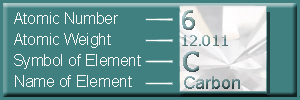
But diamonds are distinctly different from its close cousins, the common minerals graphite and lonsdaleite, both of which are also composed of carbon. Why is diamond the hardest surface known while graphite is exceedingly soft? Why is diamond transparent while graphite is opaque and metallic black? What is it that makes diamonds so unique?
The key to these questions lies in diamond’s particular arrangement of carbon atoms or its’ crystal structure-the feature that defines any mineral’s fundamental properties. A crystal is a solid body formed
from the bonding of atomic elements or compounds in a repeating arrangement. Often, crystals possess smooth external faces. Due to their symmetrical and finite nature, the building blocks of crystals are limited to relatively small numbers of atoms, and their chemical compositions to simple numerical combinations of elements.
Diamond colors range from colorless to yellow, brown, grey, orange, green, blue, white, black, purple, pink and most rarely red. Transparent and near colorless is a desirable color, diamonds are a highly valued gemstone.
The discovery of diamonds was probably in India, around the 4th century B.C. The alluvial deposits were rich enough to supply most of the world’s demand until the 18th century. The dwindling Indian supplies led to further exploration, culminating in the discovery of a new diamond source in Brazil. Beginning in 1870, South Africa’s diamond deposits were discovered, and a world- wide diamond rush was on. In 1954 major deposits were found in Siberian permafrost.
Currently, Western Canada is the site of the world’s newest diamond rush.
The cutting, polishing and setting of diamonds into the complex forms we know today are actually relatively recent practices. The earliest example of diamond jewellery is a Hungarian queen’s crown set with uncut diamonds dating from approximately 1074. The earliest record of diamond polishing is Indian, and probably dates from the 14th century. The earliest reference to diamond cutting is from 1550 in Antwerp, Belgium.
Today there are cutting centers all over the world, most notably in Belgium, Indian, Israel, South Africa and the U.S.A.

